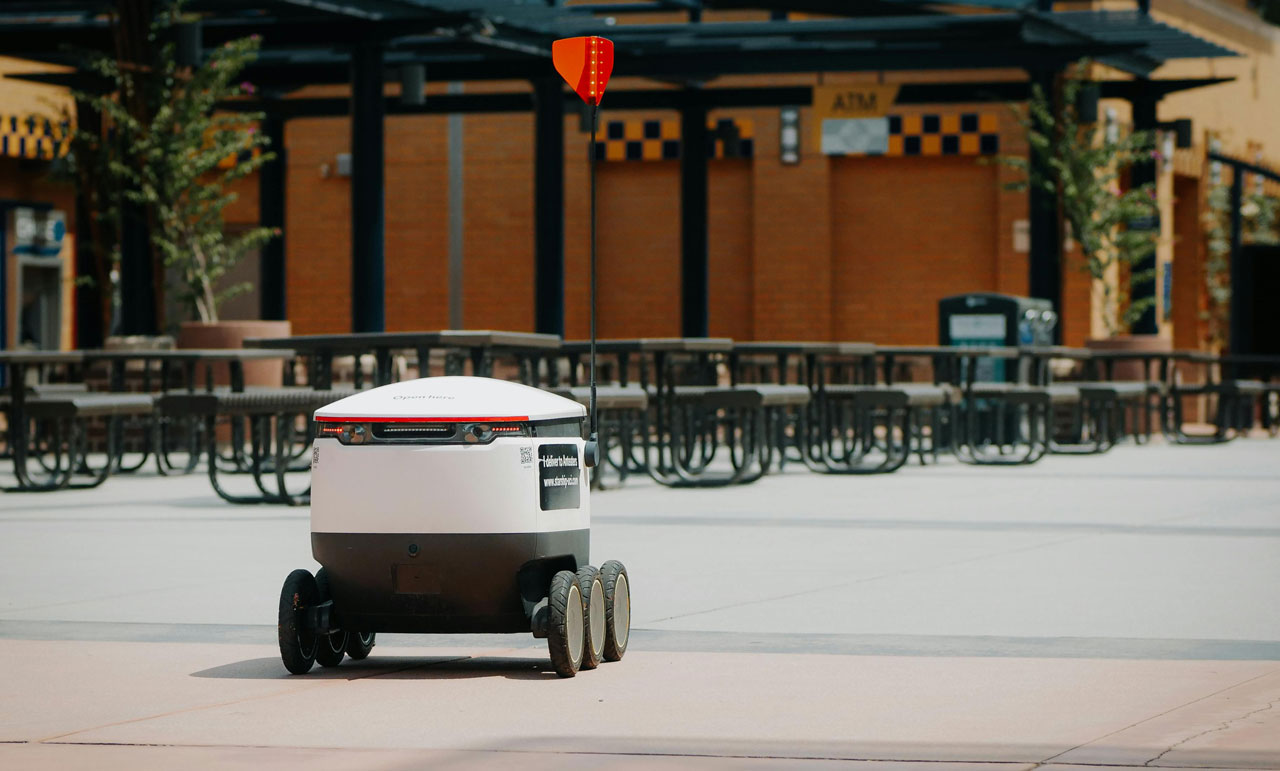개정된 지능형로봇법 내일부터 시행으로 실외이동로봇 사업 허용
보행자들의 안전을 보호하기 위한 현실적인 제한도 부과
내일부터 로봇(즉 실외이동로봇)들도 사람들과 함께 보도(步道)를 이용할 수 있게 된다.
즉 내일부터 실외이동로봇도 법적으로 보행자의 지위를 인정받아 사람처럼 인도로 다니며, 배송, 순찰, 청소, 안내, 방역 등 다양한 목적으로 활동할 수 있게 된다.
이게 가능해진 것은 ‘도로교통법’과 ‘지능형 로봇 개발 및 보급 촉진법(약칭 지능형로봇법)’이 지난 4월에 각각 개정됐기 때문이다.
우선 지난 4월 18일 국회를 통과한 개정 도로교통법(10월 19일부터 시행 중)에는 ‘실외이동로봇’도 사람과 같이 ‘보도’를 통행할 수 있다는 내용이 명문화 됐다(제2조제10호). 그리고 이와 더불어 ‘실외이동로봇 운용자’의 조작 및 운용의무(제8조의2)와 동법 위반 시 실외이동로봇 운용자를 처벌할 수 있는 법적 근거(제157조 벌칙)도 추가됐다.

사진: pexels.com
이어서 지난 4월 27일 국회를 통과한 ‘지능형로봇법(11월 17일부터 시행)’에는 ‘실외이동로봇’이 ‘배송 등을 위하여 자율주행(원격제어를 포함)으로 운행할 수 있는 지능형로봇’이라고 명확하게 정의됐다(제2조제4호). 그리고 이에 대한 운행 안전 인증기준, 사고 발생 시 손해를 배상하기 위한 보험 가입 의무 등도 추가됐다.
사람과 함께 인도를 공유해야 하는 만큼, 보행자의 안전을 보호하기 위한 여러 가지 제한이 부가될 수밖에 없다.
그래서 실외이동로봇의 질량(적재물 포함 무게 500kg 이하)과 폭(80cm 이하), 그리고 이동 속도(로봇의 최대 질량에 따라 시속 5, 10, 15km 이하)도 제한된다. 이외에도 겉모양, 알림음, 등화장치, 횡단보도 통행, 비상정지 등에 대한 제한도 있다. 이에 대한 상세한 내용은 ‘실외이동로봇 운행안전인증 절차 및 기준 등에 관한 고시‘를 참고하면 된다.
English version>>
We May Soon Robots Walking Around Alone On The Streets, Because The Revised Intelligent Robot Act Will Takes Effect On November 17th
Revised Intelligent Robot Act goes into effect tomorrow, allowing outdoor mobile robot business
Imposes realistic restrictions to protect pedestrian safety
Starting tomorrow, robots (i.e., outdoor mobile robots) will also be able to use sidewalks with people.
In other words, from tomorrow, outdoor mobile robots will be legally recognized as pedestrians and will be able to walk on sidewalks like humans and perform various activities such as delivery, patrol, cleaning, guidance, and epidemic prevention.
This is possible because the Road Traffic Act and the Intelligent Robot Development and Distribution Promotion Act (abbreviated as the Intelligent Robot Act) were revised in April, respectively.
First of all, the revised Road Traffic Act (in effect since October 19), which passed the National Assembly on April 18, stipulates that ‘outdoor mobile robots’ can pass through ‘sidewalks’ like humans (Article 2, no. 10). In addition, the duty of the operator of an outdoor mobile robot to operate it (Article 8(2)) and the legal basis to punish the operator of an outdoor mobile robot for violating the Act (Article 157, Penalty) were also added.
Following this, the ‘Intelligent Robot Act (effective from November 17)’, which passed the National Assembly on April 27, clearly defined ‘outdoor mobile robots’ as ‘intelligent robots that can operate autonomously (including remote control) for delivery’ (Article 2, no. 4). In addition, standards for operating safety certification and the obligation to purchase insurance to compensate for damages in the event of an accident have been added.
As they have to share the sidewalk with people, various restrictions are inevitably added to protect the safety of pedestrians.
For example, outdoor mobile robots are limited in mass (no more than 500 kilograms including load), width (no more than 80 centimeters), and speed (no more than 5, 10, or 15 kilometers per hour depending on the maximum mass of the robot). In addition, there are restrictions on appearance, notification sounds, lighting devices, crosswalk passage, emergency stops, etc. For more information, please refer to the ‘Notice on Safety Certification Procedures and Standards for Outdoor Mobile Robots‘.



